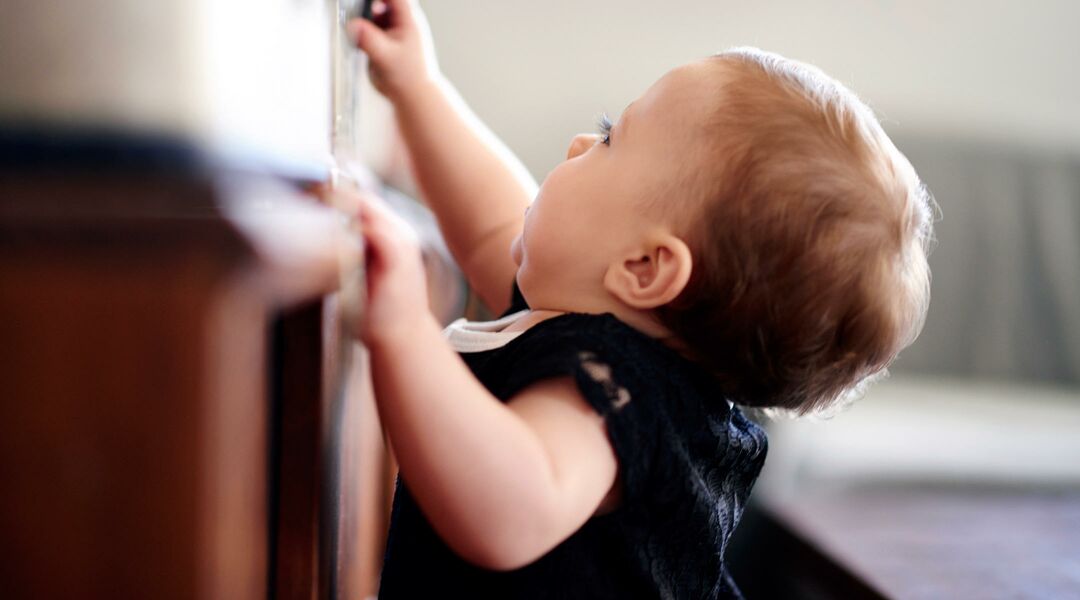How to Baby-Proof Your Home. As a parent you are always concerned about the safety of your children. Baby-proofing is a great way to avoid accidents. It may appear overwhelming at first, but planning ahead and preparing can make it a simple process. This article will give you some tips to effectively baby proof your home.
Why Babyproofing is Important
Baby’s are very curious, and they love to discover the world around them. However, babies don’t realize the dangers in it.
It is important to protect your baby by taking steps to proof your home. The babyproofing of your home can prevent injuries such as burns, falls and poisonings. You can make your child safe by babyproofing your home.
Understand the Risks
Understanding the dangers is the first step to babyproofing. Sharp corners, loose cords and toxic chemicals are all common household hazards. You can begin to reduce the risk once you identify it.
Locking Up Dangerous Items
Locking up hazardous items is one of the easiest ways to avoid accidents. Lock up items like cleaning products, medication, and personal care goods. Use child-resistant locks to keep these items away from curious hands.
Protecting Sharp Corners
Children can be seriously injured by sharp corners of furniture or other items. Consider covering sharp edges with corner protectors, or simply removing objects from the room.
Secure loose cords
Electrical cords that are too loose can cause choking hazards for children. Secure cords to prevent this by using cord covers or tucking the cords away. Unplug all electrical appliances when they are not being used to minimize the chance of an electrocution.
Safety Gates Installation
The safety gates you use are an important part of your babyproofing. You can use them to close off dangerous places like stairways and fireplaces. Choose gates made from sturdy materials that have undergone safety testing.

Plugging Up Outlets
Electrical outlets are a tempting temptation for curious children. Outlet covers can be used to cover unused outlets, preventing electrocution. Consider installing outlets that are tamper resistant. These only let a plug in when both prongs of the outlet are pressed.
How to Set the Right Temperature
Children can be seriously injured by hot water or appliances. Set your water heater at no higher than 120degF to prevent burns. Also, make sure all of your appliances are equipped with automatic shutoff.
Secure Furniture
Children can be seriously injured by furniture that falls over. Secure furniture using anchors and brackets to prevent accidents. Secure any heavy or tall items, such as televisions and bookcases.
Stay Vigilant
These tips will help you start, but remember that this is a process. It is vital to be vigilant as your child gets older and gains access to new parts of the house.
The Best Babyproofing Kits to Buy
There are several factors that you should consider when shopping for baby proofing kits.
- Safety Standards: Check that the items in the kit comply with the standards of safety set forth by the Consumer Product Safety Commission and other organizations.
- Choose a kit with a wide range of uses, including the living room, kitchen, or bathroom.
- Easy to Use: All products should be simple to use and install.
- Choose products that are made of high-quality, durable materials.
The Best Baby Safety Products
The following are the most important baby proofing items that you should include in your best-baby-proofing kit.
- Locks for cabinets and drawers
- Outlet Covers
- Corner and Edge Protectors
- Door Stoppers
- Safety Gates
- Cabinet Latches
- Drawer and cabinet latches
The conclusion of the article is:
It may appear to be an overwhelming task but, with some preparation and planning, you can make it a simple one. Understanding the risks and taking steps to prevent injuries and accidents by putting up safety gates, installing safety plugs, blocking outlets, keeping the temperature at the correct level, protecting furniture and being vigilant are all ways you can protect your child.